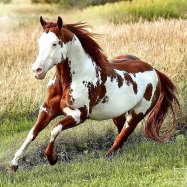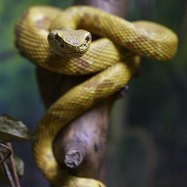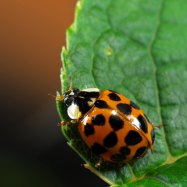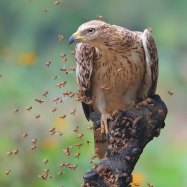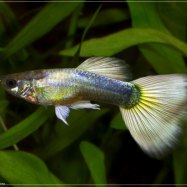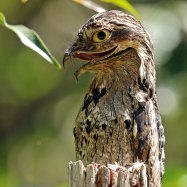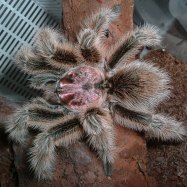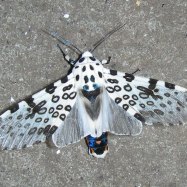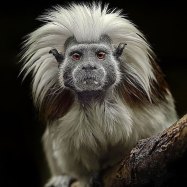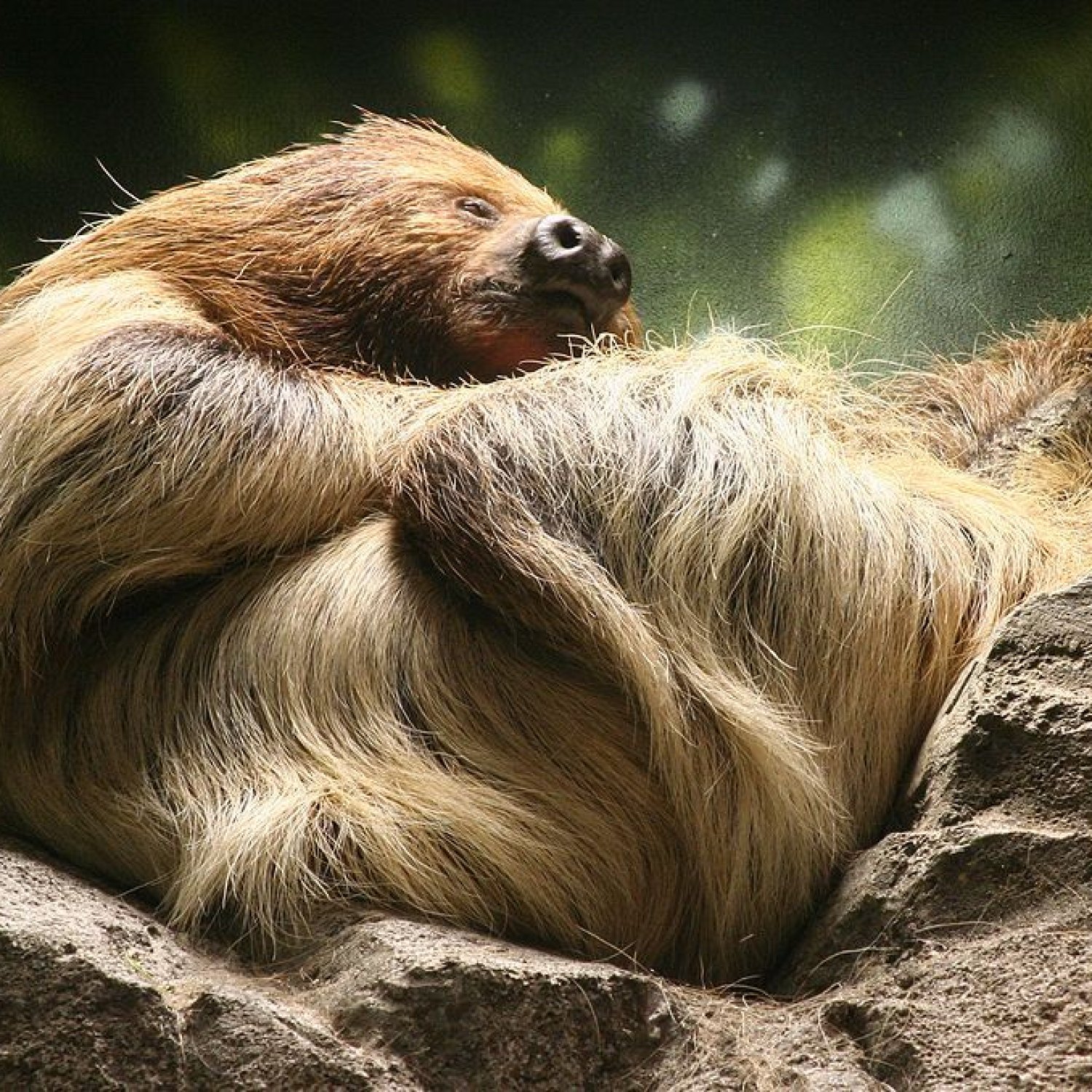
Unau
45–76 cm
The Unau, also known as the two-toed sloth, can be found in the Amazon Rainforest. With a body shape similar to other sloths, it measures between 45-76 cm in length and belongs to the Megalonychidae family. These gentle creatures spend most of their lives hanging from trees, feeding on leaves and sleeping up to 20 hours a day. Despite their slow movements, they are fascinating animals to observe in their natural habitat. #Unau #amazonrainforest #twotoedsloth
Animal Details Summary:
Common Name: Unau
Kingdom: Animalia
Habitat: Tropical rainforests
The Enigmatic Unau: An Amazing Creature of the Amazon Rainforest
Standing tall at 45-76 cm with a sloth-like appearance and brownish-gray coloration, the Unau, scientifically known as Choloepus didactylus, is a unique mammal species found in the vast tropical rainforests of South America. This slow-moving, elusive creature is a fascinating example of the diverse wildlife that calls the Amazon Rainforest its home.Classified in the Kingdom Animalia
Under the scientific classification system, the Unau belongs to the Kingdom Animalia, the largest kingdom comprising of all animals from birds to insects. Within the animal kingdom, the Unau falls under the phylum Chordata, one of the major groups of animals that includes vertebrates with a backbone or spinal cord Unau. Further down the hierarchy, the Unau is classified under the class Mammalia, along with other mammals, meaning it is a warm-blooded animal that gives birth to live young and produces milk to feed its offspring.A Member of the Order Pilosa
The Unau is a part of the order Pilosa, which includes two families: Megaloncyhidae (two-toed sloths) and Bradypodidae (three-toed sloths). The word Pilosa originates from the Latin word for "hairy" and is a fitting name for this order as all its members possess a thick, shaggy coat of fur to keep them warm in the humid rainforest environment. The Unau is a member of the Megalonychidae family, along with the Linnaeus's two-toed sloth and Hoffmann's two-toed sloth.Found in Tropical Rainforests
The Unau has a limited geographical distribution and is found exclusively in the tropical rainforests of South America. It is mainly found in Brazil, its country of origin, but can also be spotted in other South American countries like Suriname, Guyana, Venezuela, Colombia, Ecuador, Peru, and Bolivia. Within Brazil, the Unau's habitat includes the Amazon Rainforest, one of the largest and most biodiverse rainforests in the world.An Herbivorous Feeding Method
Being a mammal, the Unau's diet consists of vegetation, mainly fruits, leaves, and shoots. It is an herbivorous animal, preferring to feed on the leaves of trees like the Cecropia, fig, and guarumbo Uromastyx. The Unau's low metabolic rate helps it conserve energy, allowing it to survive on a diet of low-nutrient foods. Its slow movement enables it to take its time while foraging, and it can spend up to eight hours per day feeding on trees.A Closer Look at Its Appearance
The Unau has a distinctive appearance with a long, shaggy coat of fur ranging from light brown to dark gray in color. Its fur is incredibly dense, and algae can often be found growing in it, providing the creature with additional camouflage. Its head is small compared to its body, with large, black eyes and a short, flat snout. The Unau's mouth has no visible front teeth, only molars for grinding vegetation. Its limbs are long and slender, with long, curved claws used for grasping branches and hanging upside down.A Sloth-Like Lifestyle
As a member of the sloth family, the Unau carries out most of its activities while hanging upside down. Its limbs are designed for climbing, not walking, making it a slow-moving creature. It has a specialized joint in its shoulder that allows it to rotate its forearms, enabling it to hang effortlessly from branches. The Unau also has a small tail, providing it with additional balance while hanging from trees.Distribution and Conservation Status
The Unau is listed as a species of 'Least Concern' on the International Union for Conservation of Nature (IUCN) Red List, meaning its population is stable and not currently threatened. However, as with all rainforest creatures, the Unau's natural habitat is under threat from deforestation, leading to a decline in its population in certain areas. The Amazon Rainforest, which is the Unau's main habitat, is facing significant deforestation due to commercial activity, urbanization, and farming, among other factors.Summing It Up: The Enigma of the Unau
In summary, the Unau is an enigmatic creature often referred to as a living fossil, having survived on the earth for millions of years. Its slow-moving, hanging lifestyle may seem inefficient, yet it has allowed the Unau to adapt and thrive in its challenging rainforest habitat. With its unique characteristics and important role in the Amazon Rainforest's ecosystem, the Unau is undoubtedly a remarkable and fascinating animal worth learning more about.

Unau
Animal Details Unau - Scientific Name: Choloepus didactylus
- Category: Animals U
- Scientific Name: Choloepus didactylus
- Common Name: Unau
- Kingdom: Animalia
- Phylum: Chordata
- Class: Mammalia
- Order: Pilosa
- Family: Megalonychidae
- Habitat: Tropical rainforests
- Feeding Method: Herbivorous
- Geographical Distribution: South America
- Country of Origin: Brazil
- Location: Amazon Rainforest
- Animal Coloration: Brownish-gray
- Body Shape: Sloth-like
- Length: 45–76 cm
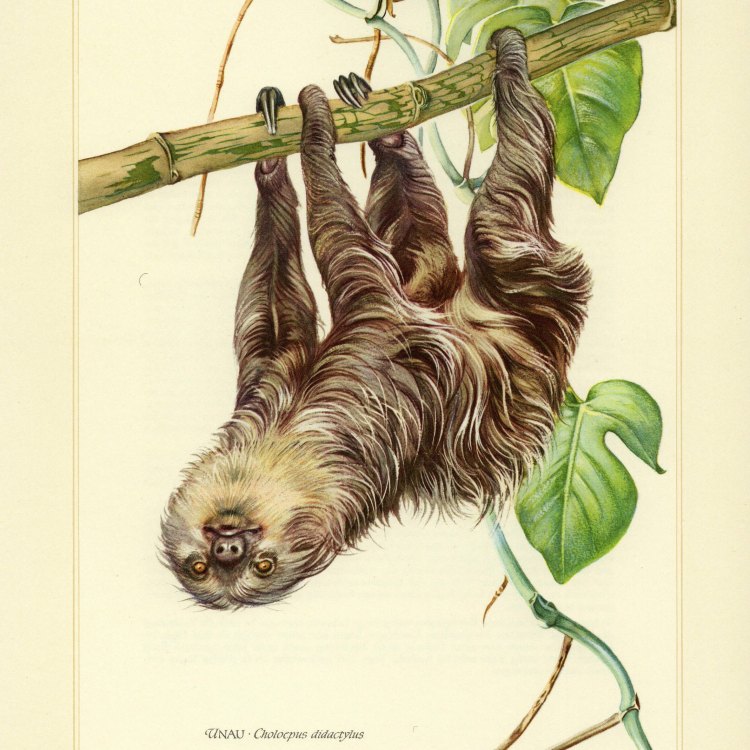
Unau
- Adult Size: Medium-sized
- Average Lifespan: 15–20 years
- Reproduction: Sexual
- Reproductive Behavior: Promiscuous
- Sound or Call: Quiet vocalizations
- Migration Pattern: Non-migratory
- Social Groups: Solitary
- Behavior: Nocturnal
- Threats: Habitat loss, hunting
- Conservation Status: Least Concern
- Impact on Ecosystem: Seed dispersal
- Human Use: None
- Distinctive Features: Long limbs and claws, slow movement
- Interesting Facts: Unaus are known for their slow movement and can spend up to 20 hours sleeping each day.
- Predator: Jaguars, harpy eagles
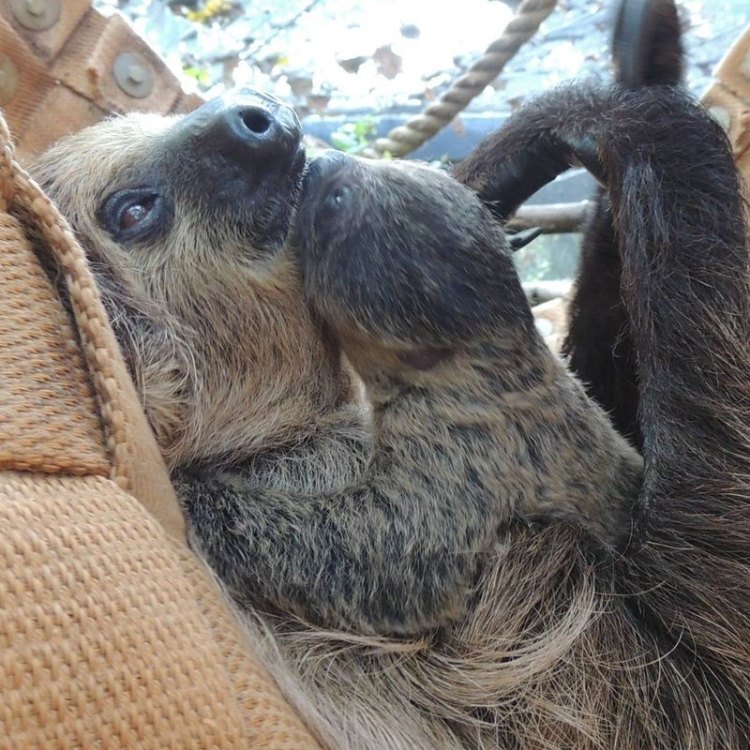
Choloepus didactylus
The Slow-Moving and Enigmatic Unau: A Fascinating Creature of the Rainforest
In the depths of the lush, green rainforests of South America, there lies a mysterious creature that embodies slowness and solitude. You may have heard of sloths, but have you ever heard of Unau? These elusive creatures are also known as two-toed sloths and are the subject of many legends and tales in the regions they inhabit. In this article, we will take a closer look at the unique features of Unaus and how they contribute to the delicate ecosystem they call home.Size and Lifespan
If you were to stumble upon an Unau in the wild, you would probably have a hard time spotting it PeaceOfAnimals.Com. These medium-sized creatures have long, shaggy fur that blends in perfectly with the lush vegetation around them. Their average size ranges from 19-25 inches and they can weigh anywhere between 8-17 pounds.
Unaus have a relatively long lifespan compared to other mammals, living on average 15 to 20 years in the wild. In captivity, they can live up to 30 years, which makes them one of the longest living arboreal animals in the world. Their slow-paced lifestyle and solitary nature contribute to their longer lifespan, as they do not have the added stress of socializing and competing for resources.
Reproductive Behavior
Unaus are sexually reproductive animals, meaning they require a male and female to come together to produce offspring. However, their reproductive behavior is quite intriguing as they are considered promiscuous. This means that both males and females can mate with multiple partners during their breeding season.
The breeding season for Unaus typically occurs between the months of March and May, with females only being receptive for a short period Urial. After a successful mating, the female will give birth to a single offspring, known as a "pup." The pup will cling to its mother for the first six months of its life, and then start to become more independent, eventually leaving its mother’s side after a year.
Quiet Vocalizations
Unlike other animals, Unaus are not known to be very vocal. In fact, their vocalizations are so quiet that they are almost indistinguishable to the human ear. They have a limited range of sounds, including low grunts, whistles, and hissing noises, which are only used for communication during mating and social interactions. This quiet nature makes it easier for them to remain hidden from predators and other animals in their environment.
Non-Migratory and Solitary
Unaus are primarily non-migratory animals, meaning they do not have a defined migration pattern like some birds or mammals. They are well-adapted to their forest habitat and prefer to stay in one area, where they have ample access to their preferred food source – leaves and fruits.
These creatures are also solitary, coming together only during the breeding season and otherwise living alone. This solitary behavior contributes to their limited vocalizations, as they do not need to communicate with others in their daily lives. It also allows them to conserve energy while staying hidden from potential predators.
Nocturnal Habits
As creatures of the rainforest, Unaus have adapted to the dark and quiet nights of the jungle. They are primarily nocturnal animals, meaning they are most active at night. This behavior not only helps them avoid the heat of the day but also keeps them safe from predators that are more active during the day.
During the night, Unaus spend most of their time foraging for food, which can take up a large portion of their time due to their slow movement. They are known to be efficient climbers and can move between trees in search of their preferred food source – leaves and fruits.
Threats and Conservation Status
Like many other rainforest dwellers, Unaus are facing many threats to their existence. Habitat loss due to deforestation is one of the most significant dangers to their population. As the rainforest is cut down for human development, Unaus are forced to leave their natural habitat in search of food and shelter, making them more vulnerable to predators and other dangers.
Hunting is also a significant threat to Unaus, as they are often hunted for their fur and consumed as bushmeat in some regions. These human-induced threats have led to a decline in the Unau population in recent years. However, they are currently classified as "Least Concern" on the IUCN Red List, as their population remains stable in areas where their habitat is protected.
Impact on the Ecosystem
Despite their slow movement and solitary behavior, Unaus play a crucial role in their ecosystem. They are known as "ecosystem engineers" as they contribute to the dispersal of seeds throughout the rainforest. As they move through the trees and consume leaves and fruits, they also carry seeds in their fur and deposit them in different areas, allowing for the growth and diversity of plant species in the rainforest.
Their slow digestion process also aids in seed dispersal, as they take a long time to break down the seeds they eat, giving them a better chance of germination and survival. This significant role in the rainforest ecosystem makes Unaus vital to the continued health and diversity of the region.
Distinctive Features and Interesting Facts
Unaus are well-known for their iconic slow movement, but there are many other unique features that make them stand out. Their long limbs and hooked claws allow them to move effortlessly through the trees, but also make them vulnerable to predators on the ground. These adaptations make Unaus perfectly suited to their arboreal lifestyle.
One interesting fact about Unaus is that they can sleep up to 20 hours a day. This is due to their slow digestion process, which means they do not need to expend a lot of energy foraging for food. This extended rest period also helps them conserve energy and avoid the heat of the day, making them more efficient in their nocturnal activities.
Predators of the Unau
Even though they are slow-moving and well-camouflaged, Unaus are not immune to predators in their environment. One of their main threats is the jaguar, a large and powerful predator found in the rainforests of South America. Jaguars are adept at climbing trees and are quick and stealthy, making them a formidable threat to the solitary Unau.
Unaus are also hunted by harpy eagles, known as the most powerful birds of prey in the world. These eagles have strong talons and a sharp beak that they use to hunt small animals in the rainforest, including Unaus. However, this threat is not as significant as habitat loss or hunting.
No Human Use
Despite their historical significance in local legends and folklore, Unaus are not utilized by humans for any purpose. They are not domesticated animals and are not kept as pets. Their unique adaptations and solitariness make them unsuitable for captivity, and their slow metabolism means they do not provide enough meat or fur for human consumption.
In conclusion, Unaus are a fascinating and enigmatic creature of the rainforest. Their slow-paced lifestyle and unique features make them a vital part of the ecosystem, and their conservation should be a priority for the protection of the rainforests they call home. By understanding their role in the environment and the threats they face, we can work towards ensuring a sustainable future for Unaus and their fragile habitat.

The Enigmatic Unau: An Amazing Creature of the Amazon Rainforest
Disclaimer: The content provided is for informational purposes only. We cannot guarantee the accuracy of the information on this page 100%. All information provided here may change without prior notice.

